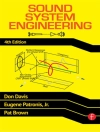With emphasis on practical aspects of engineering, this bestseller has gained worldwide recognition through progressive editions as
the essential reliability textbook. This fifth edition retains the unique balanced mixture of reliability theory and applications, thoroughly updated with the latest industry best practices.
Practical Reliability Engineering fulfils the requirements of the Certified Reliability Engineer curriculum of the American Society for Quality (ASQ). Each chapter is supported by practice questions, and a solutions manual is available to course tutors via the companion website.
Enhanced coverage of mathematics of reliability, physics of failure, graphical and software methods of failure data analysis, reliability prediction and modelling, design for reliability and safety as well as management and economics of reliability programmes ensures continued relevance to all quality assurance and reliability courses.
Notable additions include:
- New chapters on applications of Monte Carlo simulation methods and reliability demonstration methods.
- Software applications of statistical methods, including probability plotting and a wider use of common software tools.
- More detailed descriptions of reliability prediction methods.
- Comprehensive treatment of accelerated test data analysis and warranty data analysis.
- Revised and expanded end-of-chapter tutorial sections to advance students’ practical knowledge.
The fifth edition will appeal to a wide range of readers from college students to seasoned engineering professionals involved in the design, development, manufacture and maintenance of reliable engineering products and systems.
www.wiley.com/go/oconnor_reliability5
Зміст
Preface to the First Edition xv
Preface to the Second Edition xvii
Preface to the Third Edition xix
Preface to the Third Edition Revised xxi
Preface to the Fourth Edition xxiii
Preface to the Fifth Edition xxv
Acknowledgements xxvii
1 Introduction to Reliability Engineering 1
1.1 What is Reliability Engineering? 1
1.2 Why Teach Reliability Engineering? 2
1.3 Why Do Engineering Products Fail? 4
1.4 Probabilistic Reliability 6
1.5 Repairable and Non-Repairable Items 7
1.6 The Pattern of Failures with Time (Non-Repairable Items) 8
1.7 The Pattern of Failures with Time (Repairable Items) 9
1.8 The Development of Reliability Engineering 9
1.9 Courses, Conferences and Literature 11
1.10 Organizations Involved in Reliability Work 12
1.11 Reliability as an Effectiveness Parameter 12
1.12 Reliability Programme Activities 13
1.13 Reliability Economics and Management 14
Questions 17
Bibliography 18
2 Reliability Mathematics 19
2.1 Introduction 19
2.2 Variation 19
2.3 Probability Concepts 21
2.4 Rules of Probability 22
2.5 Continuous Variation 28
2.6 Continuous Distribution Functions 33
2.7 Summary of Continuous Statistical Distributions 41
2.8 Variation in Engineering 41
2.9 Conclusions 47
2.10 Discrete Variation 48
2.11 Statistical Confidence 51
2.12 Statistical Hypothesis Testing 53
2.13 Non-Parametric Inferential Methods 57
2.14 Goodness of Fit 59
2.15 Series of Events (Point Processes) 61
2.16 Computer Software for Statistics 64
2.17 Practical Conclusions 64
Questions 66
Bibliography 68
3 Life Data Analysis and Probability Plotting 70
3.1 Introduction 70
3.2 Life Data Classification 71
3.3 Ranking of Data 75
3.4 Weibull Distribution 78
3.5 Computerized Data Analysis and Probability Plotting 85
3.6 Confidence Bounds for Life Data Analysis 89
3.7 Choosing the Best Distribution and Assessing the Results 95
3.8 Conclusions 102
Questions 103
Bibliography 107
4 Monte Carlo Simulation 108
4.1 Introduction 108
4.2 Monte Carlo Simulation Basics 108
4.3 Additional Statistical Distributions 108
4.4 Sampling a Statistical Distribution 110
4.5 Basic Steps for Performing a Monte Carlo Simulation 113
4.6 Monte Carlo Method Summary 115
Questions 118
Bibliography 119
5 Load–Strength Interference 120
5.1 Introduction 120
5.2 Distributed Load and Strength 120
5.3 Analysis of Load–Strength Interference 123
5.4 Effect of Safety Margin and Loading Roughness on Reliability (Multiple Load Applications) 124
5.5 Practical Aspects 131
Questions 132
Bibliography 133
6 Reliability Prediction and Modelling 134
6.1 Introduction 134
6.2 Fundamental Limitations of Reliability Prediction 135
6.3 Standards Based Reliability Prediction 136
6.4 Other Methods for Reliability Predictions 141
6.5 Practical Aspects 143
6.6 Systems Reliability Models 143
6.7 Availability of Repairable Systems 147
6.8 Modular Design 151
6.9 Block Diagram Analysis 152
6.10 Fault Tree Analysis (FTA) 157
6.11 State-Space Analysis (Markov Analysis) 158
6.12 Petri Nets 165
6.13 Reliability Apportionment 169
6.14 Conclusions 170
Questions 170
Bibliography 175
7 Design for Reliability 177
7.1 Introduction 177
7.2 Design for Reliability Process 178
7.3 Identify 179
7.4 Design 183
7.5 Analyse 196
7.6 Verify 197
7.7 Validate 198
7.8 Control 198
7.9 Assessing the Df R Capability of an Organization 201
7.10 Summary 201
Questions 202
Bibliography 203
8 Reliability of Mechanical Components and Systems 205
8.1 Introduction 205
8.2 Mechanical Stress, Strength and Fracture 206
8.3 Fatigue 208
8.4 Creep 214
8.5 Wear 214
8.6 Corrosion 216
8.7 Vibration and Shock 216
8.8 Temperature Effects 218
8.9 Materials 220
8.10 Components 220
8.11 Processes 221
Questions 222
Bibliography 223
9 Electronic Systems Reliability 225
9.1 Introduction 225
9.2 Reliability of Electronic Components 226
9.3 Component Types and Failure Mechanisms 229
9.4 Summary of Device Failure Modes 243
9.5 Circuit and System Aspects 244
9.6 Reliability in Electronic System Design 245
9.7 Parameter Variation and Tolerances 254
9.8 Design for Production, Test and Maintenance 258
Questions 259
Bibliography 260
10 Software Reliability 262
10.1 Introduction 262
10.2 Software in Engineering Systems 263
10.3 Software Errors 265
10.4 Preventing Errors 267
10.5 Software Structure and Modularity 268
10.6 Programming Style 269
10.7 Fault Tolerance 269
10.8 Redundancy/Diversity 270
10.9 Languages 270
10.10 Data Reliability 272
10.11 Software Checking 272
10.12 Software Testing 274
10.13 Error Reporting 275
10.14 Software Reliability Prediction and Measurement 276
10.15 Hardware/Software Interfaces 281
10.16 Conclusions 281
Questions 283
Bibliography 283
11 Design of Experiments and Analysis of Variance 284
11.1 Introduction 284
11.2 Statistical Design of Experiments and Analysis of Variance 284
11.3 Randomizing the Data 296
11.4 Engineering Interpretation of Results 297
11.5 The Taguchi Method 297
11.6 Conclusions 301
Questions 302
Bibliography 305
12 Reliability Testing 306
12.1 Introduction 306
12.2 Planning Reliability Testing 307
12.3 Test Environments 309
12.4 Testing for Reliability and Durability: Accelerated Test 313
12.5 Test Planning 322
12.6 Failure Reporting, Analysis and Corrective Action Systems (FRACAS) 323
Questions 324
Bibliography 325
13 Analysing Reliability Data 327
13.1 Introduction 327
13.2 Pareto Analysis 327
13.3 Accelerated Test Data Analysis 328
13.4 Acceleration Factor 329
13.5 Acceleration Models 330
13.6 Field-Test Relationship 335
13.7 Statistical Analysis of Accelerated Test Data 336
13.8 Reliability Analysis of Repairable Systems 339
13.9 CUSUM Charts 343
13.10 Exploratory Data Analysis and Proportional Hazards Modelling 346
13.11 Field and Warranty Data Analysis 348
Questions 351
Bibliography 355
14 Reliability Demonstration and Growth 357
14.1 Introduction 357
14.2 Reliability Metrics 357
14.3 Test to Success (Success Run Method) 358
14.4 Test to Failure Method 359
14.5 Extended Life Test 360
14.6 Continuous Testing 361
14.7 Degradation Analysis 362
14.8 Combining Results Using Bayesian Statistics 363
14.9 Non-Parametric Methods 365
14.10 Reliability Demonstration Software 366
14.11 Practical Aspects of Reliability Demonstration 366
14.12 Standard Methods for Repairable Equipment 367
14.13 Reliability Growth Monitoring 373
14.14 Making Reliability Grow 382
Questions 383
Bibliography 385
15 Reliability in Manufacture 386
15.1 Introduction 386
15.2 Control of Production Variability 386
15.3 Control of Human Variation 390
15.4 Acceptance Sampling 391
15.5 Improving the Process 395
15.6 Quality Control in Electronics Production 399
15.7 Stress Screening 402
15.8 Production Failure Reporting Analysis and Corrective Action System (FRACAS) 404
15.9 Conclusions 405
Questions 405
Bibliography 406
16 Maintainability, Maintenance and Availability 408
16.1 Introduction 408
16.2 Availability Measures 409
16.3 Maintenance Time Distributions 410
16.4 Preventive Maintenance Strategy 411
16.5 FMECA and FTA in Maintenance Planning 415
16.6 Maintenance Schedules 415
16.7 Technology Aspects 415
16.8 Calibration 417
16.9 Maintainability Prediction 417
16.10 Maintainability Demonstration 418
16.11 Design for Maintainability 418
16.12 Integrated Logistic Support 418
Questions 419
Bibliography 420
17 Reliability Management 421
17.1 Corporate Policy for Reliability 421
17.2 Integrated Reliability Programmes 421
17.3 Reliability and Costs 424
17.4 Safety and Product Liability 428
17.5 Standards for Reliability, Quality and Safety 428
17.6 Specifying Reliability 431
17.7 Contracting for Reliability Achievement 432
17.8 Managing Lower-Level Suppliers 434
17.9 The Reliability Manual 435
17.10 The Project Reliability Plan 436
17.11 Use of External Services 436
17.12 Customer Management of Reliability 437
17.13 Selecting and Training for Reliability 439
17.14 Organization for Reliability 440
17.15 Reliability Capability and Maturity of an Organization 442
17.16 Managing Production Quality 444
17.17 Quality Management Approaches 446
17.18 Choosing the Methods: Strategy and Tactics 447
17.19 Conclusions 448
Questions 449
Bibliography 450
Appendix 1 The Standard Cumulative Normal Distribution Function 451
Appendix 2 χ2(α, ν) Distribution Values 453
Appendix 3 Kolmogorov–Smirnov Tables 455
Appendix 4 Rank Tables (5 %, 95 %) 457
Appendix 5 Failure Reporting, Analysis and Corrective Action System (FRACAS) 465
Appendix 6 Reliability, Maintainability (and Safety) Plan Example 467
Appendix 7 Matrix Algebra Revision 474
Index 476
Про автора
Patrick O’Connor, Stevenage, UKSince 1995 Patrick O’Connor has worked as an independent consultant on engineering management, reliability, quality and safety. He received his engineering training at the Royal Air Force Technical College and served for 16 years in the RAF Engineer Branch, including tours on aircraft maintenance and in the Reliability and Maintainability office of the Ministry of Defence (Air). He was appointed Reliability Manager of British Aerospace Dynamics in 1980 and joined British Rail Research as Reliability Manager in 1993. Mr. O’Connor is the author of Practical Reliability Engineering, published by John Wiley (4th. edition 2002). He is also the author of the chapter on reliability and quality engineering in the Academic Press Encyclopaedia of Physical Science and Technology, and until 1999 was the UK editor of the Wiley journal Quality and Reliability Engineering International. He has written many papers and articles on quality and reliability engineering and management, and he lectures at universities and other venues on these subjects. He is editor of the Wiley book series in quality and reliability engineering.
Andre Kleyner, Delphi Electronics & Safety, USAAndre Kleyner has over 25 years of engineering, research, consulting, and managerial experience specializing in reliability of electronic and mechanical systems designed to operate in severe environments. He received the doctorate in Mechanical Engineering from University of Maryland, and Master of Business Administration from Ball State University. Dr. Kleyner is a Global Reliability Engineering Leader with Delphi Electronics & Safety, and an adjunct professor at Purdue University. Andre developed and taught many training courses for reliability, quality, and design professionals. He also holds several US and foreign patents and authored professional publications on reliability, quality, and other engineering topics. Andre has is a senior member of American Society for Quality, Certified Reliability and Quality Engineer and Six-sigma black belt. He holds several US and foreign patents and hs authored many papers on the topics of warranty, lifecycle cost, reliability, and statistics. His areas of expertise are: Design for Reliability (Df R); Reliability of Electronic and Mechanical Systems; Product Test and Validation Planning; Physics of Failure; Warranty Management; Reliability Prediction and Warranty Forecasting; Weibull Analysis; Monte Carlo Simulation; Systems Engineering; Dependability analysis, and testing of energy systems for power electronics and electric/hybrid vehicles, and Training and consulting in these areas.












